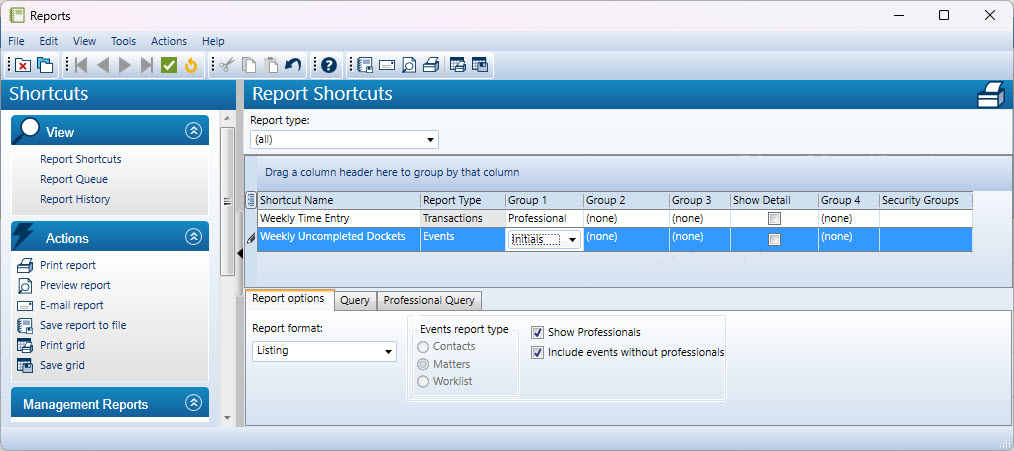Streamline Your Workflow with ProLaw’s Report Automation
In the fast-paced legal world, efficiency is key. ProLaw offers powerful tools to automate your reporting processes, saving valuable time and resources. Today, we’ll delve into how Report Shortcuts, Report Queues, and the ProLaw Agent work together to deliver seamless report automation.
Understanding the Power Trio
ProLaw’s report automation hinges on three core components:
- Report Shortcuts: Simplifying report generation by linking queries and reports.
- Report Queues: Combining multiple shortcuts for batch processing.
- ProLaw Agent: A task scheduler that automates report execution and distribution.
Report Shortcuts: Your Reporting Foundation
Every ProLaw report relies on queries to extract data. Report Shortcuts streamline this process by pairing specific queries with their corresponding reports. This eliminates the need to run queries and reports separately, making reporting more accessible for all users.
Creating a Report Shortcut:
- Navigate to the desired module (Contacts, Matters, etc.) and access the Query View.
- Create and execute your query.
- Configure groupings, sorting, and page breaks as needed.
- Preview the report to ensure accuracy.
- Click “Create Shortcut” and provide a descriptive name.
Running a Report Shortcut:
- Access the Reports section on the ProLaw Dashboard, select the Shortcuts tab, and choose your desired shortcut.
- Use the toolbar buttons to preview, print, or email the report.
- Double-clicking a shortcut will directly preview the report.
- You can set “As of Date” defaults.
- You can assign security groups to the shortcuts.

Report Queues: Batch Reporting Made Easy
Report Queues allow you to bundle multiple Report Shortcuts into a single, automated process. This is ideal for generating comprehensive reports with various data sets.
Setting Up a Report Queue:
- Go to the Report Queue tab within the Reports section.
- Assign a descriptive name to the queue.
- Specify the “Send To” destination (printer or email addresses, separated by semicolons).
- Assign security groups.
- Add the desired Report Shortcuts to the queue.
- Configure the “Include if Blank” option.
- Run the queue manually by double-clicking or using the print button.
- Use the ProLaw Agent to automate Report Queues.

ProLaw Agent: Your Automated Taskmaster
The ProLaw Agent is a built-in task scheduler that automates various ProLaw functions, including report generation. By scheduling tasks during off-peak hours, you can minimize database performance impact.
Configuring the ProLaw Agent:
- Access System Preferences from the ProLaw taskbar.
- Navigate to the Agent Schedule tab.
- Select the task type from the dropdown menu (e.g., Report queue, iSQL script, full-text index refresh).
- Specify the task details, such as the report queue name or iSQL script file.
- Set the start date and time, and configure the recurrence using the “Run Every” option.
- Use the “Hold” option to temporarily disable a task.
Running the ProLaw Agent:
- Create a shortcut to ProLaw.exe with the “/agent” parameter.
- Run this shortcut on a dedicated server or workstation to execute scheduled tasks.
- Consider the resource usage of the tasks when choosing the machine that will run the Agent.
Automating Your Legal Reporting
With ProLaw’s Report Shortcuts, Report Queues, and the ProLaw Agent, you can automate a wide range of reporting tasks, including:
- Generating contact and matter reports.
- Creating transaction and event summaries.
- Running iSQL scripts.
- Refreshing full text indexes.
- Running external programs.
- Importing cost recovery transactions.
By leveraging these powerful features, you can significantly enhance your firm’s efficiency and productivity.
#ProLaw #ProLawReports #ProLawAgent #ProLawBackOffice #ProLawFrontOffice
